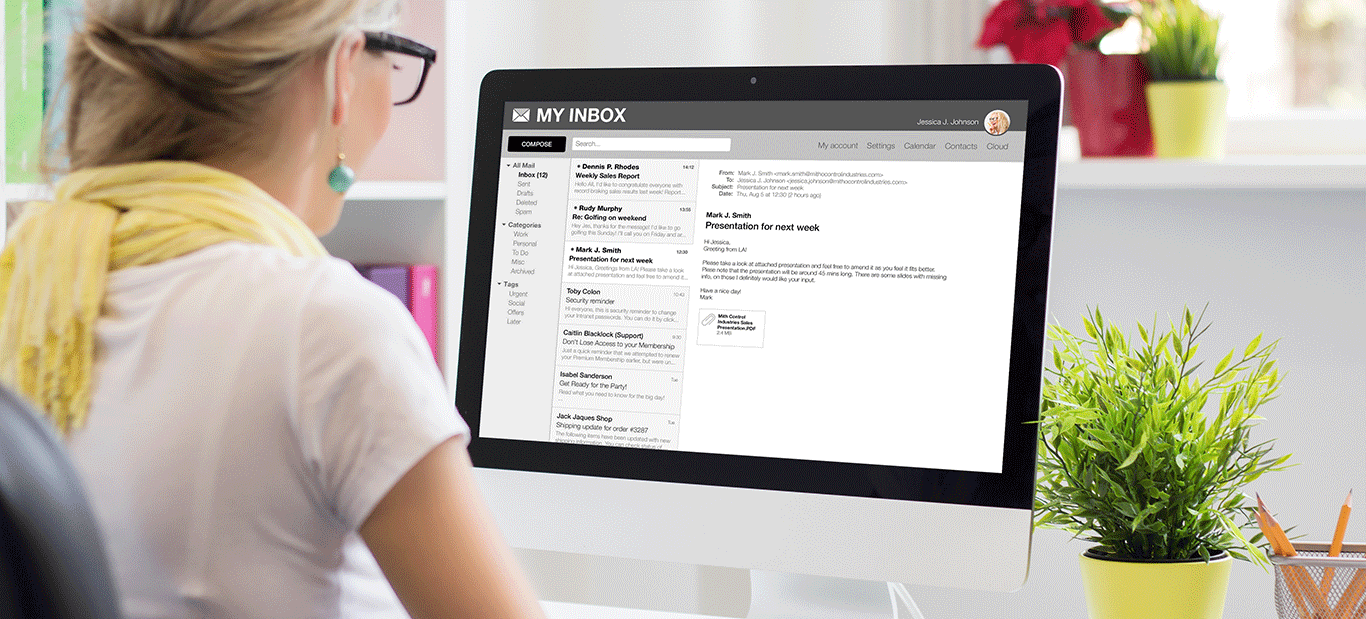Email Marketing Isn’t Dead: 5 Pillars of Personalization That Boost ROI
Email Marketing Isn’t Dead: 5 Pillars of Personalization That Boost ROI
Email marketing isn’t dead. In fact, every dollar spent on email marketing generates an ROI of $40 according to SmartInsights (you did the math correctly, that’s a 4,000% ROI) – the highest ROI of all digital marketing channels. So why are so many company leaders wary of investing in a personalized email marketing strategy?
Various myths point to email marketing as a costly, time-consuming project that yields exceptionally low open and click-through rates. If you’re following the email best practices of the early 2000s and failing to personalize content beyond a person’s name, then sure. However, 71% of consumers say a personalized experience would encourage them to open and read a brand email, and as of 2020, 52% expect emails to always be personalized – a 49% increase from 2019. We’re here to break down the biggest mistakes we see and provide insights into creating an effective, personalized email marketing strategy to accelerate demand, build brand loyalty and positively impact your bottom line.
1. Segment Your Email Lists
Nothing is more frustrating than receiving a slew of generalized, irrelevant emails – or, even worse, receiving an email that promotes something you already purchased or downloaded. Fortunately, the abundance of powerful marketing technologies today come with seemingly endless opportunities to segment your emails. Effective email marketing comes from sending users content catered to their wants and needs.
Perhaps you’re feeling like your CRM data is lacking. That’s an engagement killer. To send highly targeted and relevant content you need to collect information about your contacts. You can gather this information by including pertinent questions and fields on your website forms. Say a company is known for selling popular meat-based and meat-free brands – they’ll definitely want to know which contacts are vegan or vegetarian before sending an email about a new chicken product. It’s key. Sending relevant content to segmented contacts increases click-through rates by more than 100%.
To build out email list segments, begin by defining your buyer personas. From demographics, to interests, to actions they take on your website or social media accounts, who are they? Some starting points for using data to segment your lists include:
- Location (city, state, country, neighborhood, etc.) – How do your products/offers differ by geographic location (if they do)? Is your company hosting an in-person event?
- Interest in certain products – Has the user viewed the product page frequently in the past week? Have they historically purchased a product on a frequent basis and recently stopped? What types of products do they purchase or view on your website? Did you just launch a product that is similar to another item they frequently purchase?
- Interest in lifestyle trends and topics – Are these users gluten-free, dairy-free, meat-free, etc.? Do they care about a company’s sustainability initiatives? Is environmental impact a priority for them? What technologies do they rely on regularly?
- Viewed or downloaded specific content – Do you have different content pieces catered towards different buyer personas? If someone interacted with content that complements or relates to another piece, send an email that promotes it.
2. Use Merge Tags and Custom Fields That Make Sense
Segmentation is the primary building block to personalized messaging success. But sending content related to a person’s lifestyle, behaviors, and demographics alone aren’t enough. You’ll need to go beyond targeted lists and use merge tags (or custom fields, depending on which platform you’re using) to develop a personal connection between your brand and the user. The person opening your email doesn’t want it to feel like a marketing email blast – they want it to feel like the message is just for them (without being too creepy, of course).
Here are some personalized fields to incorporate into your emails that go beyond someone’s name:
- Favorite or most frequently purchased product
- Date they signed up for emails
- Location (if shared by the user)
Hot Tip: Make sure to set fallback values and test your tags before sending your email. Otherwise, someone on the receiving end may get the awkward “Hello *|FIRST NAME|*” message.
3. Set Off Email Triggers with Marketing Automation
Marketing automation is a rapidly growing area of digital marketing for a reason. Leveraging automation tools to their full potential to create an engaging, timely experience for users without hours of manual labor and time wasted is crucial. With over half of companies now using automation as a part of their digital marketing efforts, those that refuse to hop on the bandwagon will likely struggle.
Common data-driven triggers include:
- Welcome emails for new customers, members, or subscribers
- Follow-up about a recent purchase or sales call
- Content promotions after downloading or viewing similar content
- Abandoned cart (if an e-commerce website)
- Anniversaries (subscription, first purchase, etc.)
4. A/B Test and Repeat
Email marketing, like any other digital marketing approach, comes with experimentation and testing. Your email campaigns should incorporate a mix of the strategies listed above. To determine which criteria work best for each of your audience segments, leverage A/B testing.
Email marketers typically run tests on the following:
- Using someone’s name in the subject line, teaser/preview text, or body copy
- Image versus no image
- Fancy template versus plain text
- CTA text, button size, button color, or button placement
- Sender name
When A/B testing elements in your email, ensure to only test one thing at a time. If you try including a first name merge tag in the subject line and changing the sender name within the same test and open rates are substantially higher in version A, you can’t accurately evaluate which criteria led to that result.
Hot Tip: If you find that adding someone’s first name to the ‘teaser’ or ‘preview’ text portion of an email yields higher open rates after running a few tests, don’t stop there. Keep up that practice for that particular segment, but also run tests on new elements such as CTA button placement/colors.
5. Don’t Spare Your Data
Taking the time to collect and analyze your CRM data is integral to understanding if your strategies are working. Evaluating your results is a must for continued personalization and email success.
Useful KPIs and metrics to track from your campaigns include:
- Open rate (number of opens out of number of emails delivered)
- Click-through rate (number of clicks out of number of emails opened)
- Unsubscribe or opt-out rate (number of unsubscribes out of number of emails sent)
- Optimal send days and times (times the most users open your emails)
- Breakdown by email client (if most of a segment views on Outlook mobile, it’s extra crucial to ensure the email template is optimized for that device and client)
After collecting your data, keep track of how each of your audience segments performs in terms of the above KPIs. If open rates are low, consider adding more personal flair to your subject lines. If click-through rates are struggling, reconsider the content you’re promoting, the CTA text or placement, or template format.
Investing in a personalized email marketing strategy is worth every penny. If done carefully, it can build awareness and loyalty around your products and increase ROI.
If you don’t have the internal bandwidth to spend time working out the kinks of your strategy – from CRM set up, to building emails, to developing targeted campaigns and beyond. MorganMyers can help your brand capture its target audiences through the power of email marketing and automation strategy. Share your biggest branding objectives and goals with us. We’d love to help you execute a segmented, personalized email campaign to engage audiences with your brand content that aligns with their brand expectations.
 Back To Blog
Back To Blog

